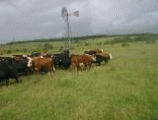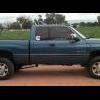- Replies 21
- Views 12.8k
- Created
- Last Reply
Top Posters In This Topic
-
 hex0rz 5 posts
hex0rz 5 posts -
 rancherman 4 posts
rancherman 4 posts -
 mulcher812 3 posts
mulcher812 3 posts -
 TFaoro 3 posts
TFaoro 3 posts


Got my studs in the mail today! Popped it open to look it over...
I have a couple questions. Instructions say to chase the threads. Where can I get a chaser? Auto parts store?
Do any of our studs protrude into the water jackets?
Should I use Loctite?
The studs are hand tightened, then the "Nuts" are torqued?
Says to incrementally torque in three steps and make a final torque to 125 ft. lbs. What do I make the first 2 rounds for in torque?
Also included is an illustration showing that I have to machine the rocker cover at stud 24, is this necessary?
Anything else I need to know about installing these?
(D'oh! Just realized I said AEP not ARP...)
Edited by hex0rz